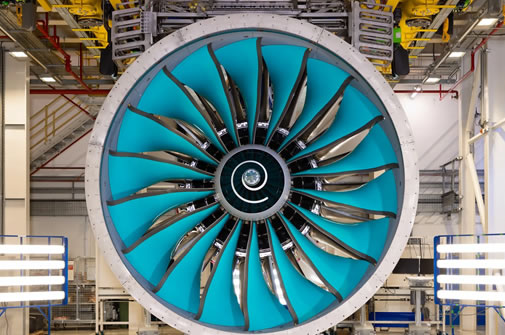Aircraft pre-inspection and APA signing for used aircraft transactions二手飞机交易之飞机预检及APA签署
二手飞机作为大型物件,其交易流程中涉及诸多环节,如预检、APA签署等,相对比较复杂。二手飞机交易涉及相关方较多,流程复杂,这里介绍二手飞机交易2阶段-飞机预检及APA签署,以供各位同行参考借鉴。
一、预检(Visual Inspection)
1、预检准备
当买卖双方律师确认定金托收后,买方需尽快准备预检。买方可以安排MRO(通常不建议MRO执行,因为预检中如发现不符合项且形成纸面维修记录将直接影响卖方利益,通常卖方也不会同意在MRO执行预检)或者第三方的飞机检查机构如SGI Aviation等公司执行比较专业客观,执行结果可信程度较高且报告不形成飞机履历不会影响卖方利益,买方也可以委派一个自己公司的或者其他公司熟悉且信任的工程师去执行预检。买方确认好执行预检的机构或人员后,需要与其签订相关预检的协议后再执行预检,这个过程通常需要2-3天。
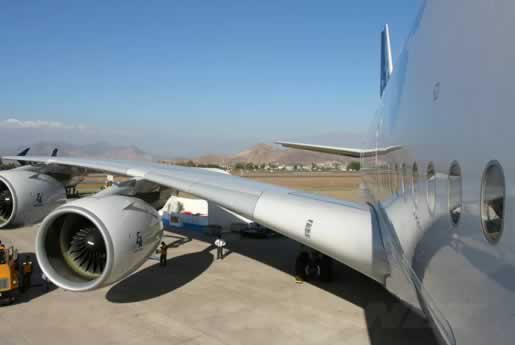
2、预检执行
买方找到合适的预检人员后就可以和卖方联系,确认预检时间和地点后开始执行,预检内容通常会在LOI中明确,一般包含以下两部分:
A,文件检查
文件检查一般检查AD/SB状态,飞机完工构型(completion specification),改装清单(STC list),CMP数据 (重点检查AD/SB执行情况,飞机定检临近时间和级别,发动机等高价部件的时寿情况),飞行记录和技术记录,维修记录等内容。
买方或预检人员可以提前向卖方索要AD/SB状态,飞机完工构型(completion specification),改装清单(STC list),CMP数据的电子版文件进行提前审核以节约时间,通过对相关数据的检查后,对飞机有一个大概的了解和发现一些后续现场文件检查中需要重点检查的可疑的项目或缺陷等。
飞行记录和技术记录,维修记录等内容通常卖方不会提前给电子版给买方,这些内容需要预检人员现场检查。飞行记录检查需检查其连续性,并对飞机的飞行情况和停场情况的逻辑性和合理性进行判断,以发现飞机过往是否发生过重大非例行停场,然后对怀疑的时间节点的技术记录和维修记录等进行交叉检查与核实。技术记录和维修记录重点检查重大非例行工作和重复性故障即可,其他可以不用太关注。
另外如果飞机需要转注册,需要考虑注册国对TC/STC认证的要求,及运行中对某些设备如通信导航设备,氧气设备,应急设备,记录设备等特殊要求,特别是注册国首架引进,需要慎重评估,否则可能导致飞机购买后需要花费巨额成本改装或认证,还可能根本无法转注册。通常APA的条款中会加入飞机的设备和状态需到达转注册要求的条款,以规避此风险,但是如果真到这一步,买卖双方都会非常被动,所以要尽量提前规避。
文件检查周期根据买方要求检查的内容和细致程度而定,一般需要1-2天时间完成。
B, 物理检查
物理检查一般是对飞机实际状态进行实地检查,检查内容通常会在LOI中明确,一般都是非侵入式检查,即不能使用维修工具拆卸后检查。通常包含外观检查和通电检查,也可以要求试车检查,整个检查周期一般需要1-2天时间。
通过物理检查可以直观了解飞机结构腐蚀情况,客舱内饰保养情况和装修风格,飞机外部喷涂(注册号)及漆面情况,发动机和其他部件有无漏油等情况以确定飞机的整体维修和保养状态。
通电检查可以了解飞机系统当前有无故障,各个系统是否正常,进入诊断系统还可以了解飞机构型及故障历史等信息,以了解飞机各系统当前和历史的工作情况。如果LOI中有试车检查,可以了解发动机的相关参数,以判断发动机工作情况及发动机的裕度。
除了以上检查判断飞机的基本状态外,物理检查还需要对飞机的型号序号铭牌,发动机铭牌,APU铭牌,起落架铭牌,驾驶舱内的租赁铭牌等相关信息进行取证,以核实所检查飞机的身份信息符合LOI中所描述的飞机(标的物),也与文件检查的相关信息保持一致,以防欺诈。
3、预检报告
当预检人员或机构按照买方要求完成预检后,会形成一个书面的预检报告给买方,报告中会对已检查的项目进行阐述和评分,标出需要重点关注的不符合项或缺陷,并对此次检查结果一个总结意见供买方决策参考,同时会提供相关的照片,视频和文件材料。
卖方陪同预检人员执行预检时,需要保持良好的沟通,尽量减少因沟通不畅导致的不符合项不实或增加的情况,以减少后期沟通成本促成交易。
买方在得到预检报告后,需对其不符合项进行评估判断,决定是否可以接受还是需要处理或折价,并把意见反馈至买卖双方团队进行沟通磋商,如果能谈拢就可以准备下一阶段的APA谈判和签署工作,否则就退还定金,买卖双方之间不再有任何法律义务和责任。
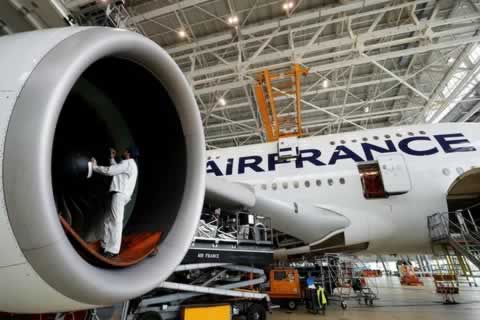
因LOI通常对预检是有期限要求的,通常10-14天左右,而从预检开始准备到拿到预检报告需要5-7天时间,故买方在签署LOI后需尽快完成预检以判断飞机是否满足要求并决定是否准备后续的APA谈判和签署。如果在APA完成签署前超过了LOI的有效期,则需要对LOI进行书面延期,以保障各方权益。
二、APA合同谈判与签署
在预检(Visual Inspection)完成后,如果买方对检查结果满意将与卖方进行APA(Aircraft Sale and Purchase Agreement)合同谈判及签署。APA合同一般包含待售飞机(标的物)描述、术语定义和解释、飞机检查机构和项目、飞机交付条件、各方权利责任和义务、各项费用分摊原则与支付节点、违约退出或终止交易条款、排他条款、免责条款、仲裁条款、签署页和Aircraft Specifications/Form of Technical Acceptance Certificat/Form of Delivery Receipt and Acceptance Certificate/Form of Bill of Sale 等附件组成,其中飞机检查机构和项目、飞机交付条件各宗交易差异较大,涉及各方直接权益是APA谈判最胶着的地方,需要双方的技术团队把关,对此次交易特殊情况和预期进行合理评估和判断;其他条款和内容较为范式,符合行业惯例客观合理即可,但也需要双方的法务团队对交易的各时间节点及可能违约的情况进行把握,以降低交易风险使之符合预期,下面就这些重点注意事项进行介绍。
1、飞机检查机构和项目
飞机检查机构和项目的明确是对飞机状态是否符合预期的确认过程,是整个交易过程中维修成本和时间成本影响最大的地方,通常在APA签署前的LOI签订中初步明确,相关利弊分析可参见前文——二手飞机交易-1,飞机出售启动及LOI签署,现通过一些APA实例进行分析。
此案例飞机机龄少于5年,且还在制造厂保修期内,交易市场很紧俏,买卖双方都希望尽快完成交易,故APA合同中未要求执行PPI,仅执行基本检查(Basic Inspection),其中包含文件检查,飞机地面系统检查(非侵入式),演示飞行(Demonstration Flight)和发动机/APU孔探。除了孔探外,已明确所有的检查均不能由维修机构或制造厂执行(以防止检查结果形成维修记录后导致交易周期不可控)。在实际交易过程中,买方为进一步提高交易效率,考虑到飞机机龄短又在保修期内,发生问题的概率很低,即使有问题也是保修的,于是买方按照制造厂的意见并未执行真正意义上的孔探(Borescope Inspection),仅完成发动机/APU详细目视检查,排除了人为或外来物损伤等导致的不能索赔的情况后就技术接收了,如此一来既规避了风险又提高了效率,使得买卖双方都比较满意并非常迅速的完成了交易,整个交易过程只有短短35天。
此案例飞机机龄较长,超过了13年,且当时市场并不紧俏,属于买方市场,买方(中介)为放缓交易节奏拖延时间等待飞机转手,不但要求执行最高级别的PPI而且还要求试飞(Inspection Flight/ Test Flight), 如此一来PPI整个过程耗了将近90天,卖方还付出近40万美元的维修纠偏费用才得以完成交易。
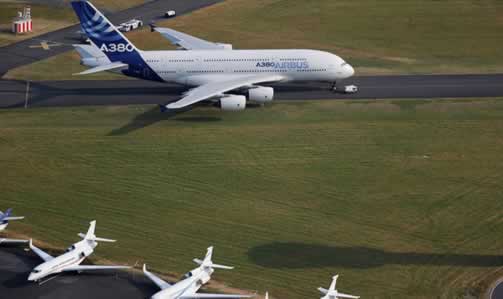
2、飞机交付条件
飞机交付条件相比于飞机检查机构和项目要范式得多,通常都是要求飞机产权清晰、无抵押无债务,属可以交易状态,无损伤无腐蚀,文件记录完整(可能有语言要求),飞机处于适航状态,各系统工作正常符合手册要求,各保修协议交割日仍有效等条款,但仍有一些需要注意的地方,下面以案例进行说明。
此案例对飞机适航是有截止日期的,因为飞机临近定检,考虑到飞机交割日期可能会晚于定检开始日期而使得飞机处于不适航状态或处于延期适航状态,从而导致无法调机或转注册等而产生纠纷,为避免此类情况发生,如果定检将近就需要设定适航保持的截止日期或明确定检执行的责任主体。一般如果是现状交付,整个交易过程至少要考虑到60天以后的适航状态和定检要求,如果是执行PPI的话,按照不同的PPI级别,需要考虑到90-120天以后的适航状态和定检要求,再据此谈判适航保持时间的细节条款。如此案例中飞机4C定检需要在12月1日开始,考虑到交易日期可能晚于此日期,故设置适航保持截止日期为11月30日,最终飞机交易完成日期果真晚于定检开始日期为12月9日交割,如无此条款将会导致卖方非常被动,故此需要慎重考虑。
此案例中的交付条件是无需任何改装就可满足FAA注册要求,但是查阅FAA注册取适航证的相关要求后就会发现大有乾坤,FAA8130.2J 2-3. Common Procedures for Issuing an Airworthiness Certificate. e. Inspect Aircraft. Physically inspect the aircraft to verify−中相关条款摘录如下:
其中第(6)条要求飞机所有设备都功能正常,还不能有故障保留项目,这样涉及面就非常广,适航相关项目,非适航相关项目都无差别覆盖了,这就与APA中卖方仅负责适航相关项目是矛盾的,在实际操作中因MRO维修厂和买方的利益诉求一致而沆瀣一气,MRO和买方通常会要求严格按照规章来,所有缺陷不论是否与适航相关的项目通通列出来并要求全部处理,特别是老龄飞机客舱系统部件如WIFI,操作面板或灯管等虽然不是适航相关项目平常也未深究,但当PPI检查出缺陷后会发现可能因部件停产等原因而无法修复或需要花费高昂的改装费用升级整套系统后才能满足规章要求,这样就导致卖方处于非常不利的地位,也对卖方技术代表的专业能力和沟通协调能力提出来很高的要求,因为此类非适航相关的项目其实也是民不举官不究可以商量的,卖方技术代表需要给制造厂施压,积极与制造厂和买方沟通协调出一个大家都能接受的方案。曾经就遇到过某架飞机的客舱一个灯管不亮但已经停产,需要整个系统升级后才能符合规章要求,经施压后制造厂联系了灯管厂修复了此灯光系统,仅花费不到系统升级十分之一的费用得以最终解决。
为了减少此类情况造成的影响和损失,对于老龄需转注册的飞机,卖方团队的谈判策略可以尽量降低PPI的检查级别,尽量减少PPI的检查项目,尽量选择远离注册国本土的MRO,尽量选择自己熟悉信任的MRO,尽量不要选择制造厂提供的人员和测试清单试飞,最好不要试飞而选择演示飞行。
3、交易的各时间节点及可能违约的情况
为保障交易节奏防止无端拖延,需要对交易的各个时间节点进行时间限制,交易中常见的时间节点和周期可以参考如下:
a、LOI签署后预检周期10-15天完成APA签署;
b、APA 签署后10-15天完成去检查地点调机,如需执行PPI需要结合MRO的时间,如需出口还需考虑办理出口适航证时间及海关时间;
c、PPI启动后,10-15天出PPI检查报告;
d、PPI检查报告出来后,2-3天完成Form of Technical Acceptance Certificat签署(无条件接受,有条件接受,拒绝接受三者之一);
e、PPI完成纠偏并放行后,1-3天完成交易地点调机(如需);
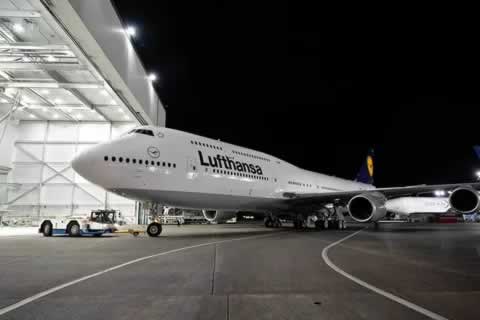
f、飞机到达交易地点后,飞机购机款打入监管账户并启动国籍注销,5-7天完成国籍注销(如需);
g、1-2天完成Form of Delivery Receipt and Acceptance Certificate/Form of Bill of Sale、保修转让、产权登记等签署或登记后完成交易。
上述时间节点动作考虑的都是正常情况,作为法律文书APA还需要考虑如上述时间节点的动作没有按时完成该如何处理,即违约和免责条款,这些需要专业律师拟定,大的框架和流程走向可以参考下面流程图中的违约赔偿/纠纷处理/终止交易流程情况。
APA合同是双方就飞机交易的法律文件,显著影响自身权益或交易预期及结果,故双方都会从利于自身的角度出发谈判,是双方经过博弈和磋商到达一个平衡的过程,这个谈判过程一般需要7-10天甚至更长时间后才能签署,当然也可能最终无法达成共识完成APA签署而终止此次交易。
Second-hand aircraft transactions involve many parties and the process is complex. This issue introduces the second stage of second-hand aircraft transactions - aircraft pre-inspection and APA signing, for your peers' reference.
First, pre-inspection (Visual Inspection)
1. Pre-inspection preparation
When the buyer and seller's lawyer confirm the deposit collection, the buyer should prepare the pre-inspection as soon as possible. The buyer can arrange MRO (MRO execution is usually not recommended, because if non-conformance is found in the pre-inspection and a paper maintenance record is formed, it will directly affect the interests of the seller, and usually the seller will not agree to perform the pre-inspection in MRO) or a third-party aircraft inspection agency such as SGI Aviation is more professional and objective. The result of the execution is reliable and the report does not form a history of the aircraft will not affect the seller's interests, and the buyer can also appoint an engineer who is familiar with and trusted by his own company or other companies to perform the pre-inspection. After the buyer has confirmed the organization or personnel performing the pre-inspection, it is necessary to sign the relevant pre-inspection agreement with the buyer before performing the pre-inspection, which usually takes 2-3 days.
2. Pre-inspection execution
After the buyer finds the appropriate pre-inspection personnel, he can contact the seller to confirm the pre-inspection time and place and start the execution. The pre-inspection content is usually specified in the LOI, which generally includes the following two parts:
A, file check
General inspection of AD/SB status, aircraft completion specification, STC list, CMP data (focusing on AD/SB execution, aircraft inspection approach and level, engine and other expensive components of the age), Flight and technical records, maintenance records, etc.
The buyer or the pre-inspector may ask the seller for AD/SB status, aircraft completion specification, STC list, and electronic files of CMP data to be reviewed in advance to save time. After the inspection of relevant data, Have a general understanding of the aircraft and find some suspicious items or defects that need to be checked in the follow-up field documentation inspection.
Flight records, technical records, maintenance records and other contents usually the seller will not give the electronic version to the buyer in advance, and these contents need to be checked by the pre-inspection personnel on site. The flight record check needs to check its continuity, and judge the logic and rationality of the flight conditions and stopping conditions of the aircraft, so as to find out whether the aircraft has any major irregular stopping in the past, and then cross-check and verify the technical records and maintenance records of the suspected time nodes. Technical records and maintenance records focus on checking major non-routine work and repetitive faults, and others can be paid less attention.
In addition, if the aircraft needs to be registered, it is necessary to consider the requirements of the registered country for TC/STC certification, and the special requirements of some equipment such as communication and navigation equipment, oxygen equipment, emergency equipment, recording equipment and other special requirements during operation, especially the first introduction in the registered country, which needs to be carefully evaluated, otherwise it may lead to the huge cost of modification or certification after the purchase of the aircraft. It may not be possible to transfer registration at all. Usually, APA clauses will add the provisions that the equipment and status of the aircraft need to meet the requirements of registration transfer to avoid this risk, but if it really comes to this step, both buyers and sellers will be very passive, so they should avoid it as far as possible in advance.
The document inspection cycle depends on the content and detail required by the buyer, and generally takes 1-2 days to complete.
B, physical inspection
Physical inspection is generally a physical inspection of the actual state of the aircraft, the content of the inspection is usually defined in the LOI, and it is generally non-invasive, that is, it cannot be inspected after disassembly using maintenance tools. It usually includes appearance inspection and power inspection, and can also require test inspection, and the entire inspection cycle generally takes 1-2 days.
Through physical inspection, you can intuitively understand the corrosion of aircraft structure, cabin interior maintenance and decoration style, aircraft external spraying (registration number) and paint, engine and other parts have oil leakage and other conditions to determine the overall maintenance and maintenance status of the aircraft.
Power inspection can understand whether the aircraft system is currently faulty, whether each system is normal, and enter the diagnostic system can also understand the aircraft configuration and fault history and other information to understand the current and historical work of the aircraft system. If there is a test check in the LOI, the relevant parameters of the engine can be understood to judge the working condition of the engine and the engine margin.
In addition to the above inspection to determine the basic status of the aircraft, the physical inspection also needs to obtain evidence from the aircraft's model number nameplate, engine nameplate, APU nameplate, landing gear nameplate, lease nameplate in the cockpit and other relevant information to verify that the identification information of the inspected aircraft conforms to the aircraft described in the LOI (subject matter) and is consistent with the relevant information of the document inspection. To prevent fraud.
3. Pre-inspection report
After the pre-inspection personnel or institutions complete the pre-inspection according to the requirements of the buyer, a written pre-inspection report will be formed to the buyer. In the report, the inspected items will be described and scored, the non-conformance items or defects that need to be focused on will be marked, and a summary opinion on the inspection results will be provided for the buyer's decision reference. At the same time, relevant photos, videos and documents will be provided.
When the seller accompanies the pre-inspection personnel to perform the pre-inspection, it is necessary to maintain good communication to minimize the false or increased non-conformance caused by poor communication, so as to reduce the later communication cost and facilitate the transaction.
After getting the pre-inspection report, the buyer needs to evaluate and judge the non-conformance, decide whether it is acceptable or needs to be dealt with or discounted, and feedback the opinions to the buyer and seller team for communication and negotiation. If the agreement can be reached, the buyer can prepare for the next stage of APA negotiation and signing, otherwise the deposit will be returned, and the buyer and seller will no longer have any legal obligations and responsibilities.
Since LOI usually has a deadline for pre-inspection, usually about 10-14 days, and it takes 5-7 days from the preparation of pre-inspection to the receipt of the pre-inspection report, the buyer should complete the pre-inspection as soon as possible after signing the LOI to judge whether the aircraft meets the requirements and decide whether to prepare for the subsequent APA negotiation and signing. If the validity period of the LOI is exceeded before the APA is completed, a written extension of the LOI is required to protect the interests of all parties.
Ii. APA contract negotiation and signing
After the completion of Visual Inspection, if the buyer is satisfied with the inspection results, APA (Aircraft Sale and Purchase Agreement) contract negotiation and signing will be carried out with the seller. APA contracts generally contain a description of the Aircraft for sale (subject matter), definitions and explanations of terms, aircraft inspection bodies and items, aircraft delivery conditions, rights, responsibilities and obligations of each party, cost allocation principles and payment points, default exit or termination clauses, exclusivity clauses, disclaimer clauses, arbitration clauses, signature pages and aircraft Specifications/Form of Technical Acceptance Certificat/Form of Delivery Receipt and Acceptance Certificate/Form of Bill Among them, aircraft inspection agencies, projects and aircraft delivery conditions differ greatly from each other. The direct rights and interests of the parties involved are the most difficult part of APA negotiations, which requires the technical teams of both sides to check and reasonably evaluate and judge the special circumstances and expectations of this transaction. Other terms and contents are relatively normal and in line with industry practices, which are objective and reasonable. However, it is also necessary for the legal teams of both parties to grasp the various time nodes of the transaction and the possible breach of contract, so as to reduce the transaction risk and meet the expectations. These key points for attention are introduced below.
1. Aircraft inspection bodies and projects
The clarification of aircraft inspection institutions and projects is the confirmation process of whether the aircraft's condition meets the expectations, and it is the place where the maintenance cost and time cost have the greatest impact in the entire transaction process. It is usually preliminarily defined in the LOI signing before the APA signing. The relevant analysis of advantages and disadvantages can be seen in the previous text - Used Aircraft Transaction -1, Aircraft sale Launch and LOI signing. This paper analyzes some APA examples.
In this case, the aircraft is less than 5 years old and still within the warranty period of the manufacturer. The trading market is very tight and both the buyer and seller hope to complete the transaction as soon as possible, so the APA contract does not require the execution of PPI, but only Basic Inspection, including document inspection and aircraft ground system inspection (non-invasive). Demonstration Flight and engine /APU drilling. With the exception of drilling, it has been made clear that all inspections cannot be carried out by the maintenance organization or the manufacturing plant (to prevent uncontrolled transaction cycles as a result of the inspection results forming maintenance records). In the actual transaction process, in order to further improve the transaction efficiency, the buyer considers that the aircraft is short in age and within the warranty period, and the probability of problems is very low. Even if there is a problem, it is guaranteed, so the buyer does not carry out Borescope Inspection in the true sense according to the manufacturer's opinion. Only after completing the detailed visual inspection of the engine /APU and excluding the non-claim caused by artificial or foreign object damage, the technology was received, so that the risk was avoided and the efficiency was improved, so that both the buyer and the seller were satisfied and the transaction was completed very quickly, and the whole transaction process was only 35 days.
In this case, the aircraft is relatively old, more than 13 years, and the market was not tight at that time, it was a buyer's market, and the buyer (intermediary) delayed the time waiting for the aircraft to change hands in order to slow down the transaction rhythm. Not only was the highest level of PPI required to be executed, but Inspection Flight/ Test Flight was also required, so the PPI process took nearly 90 days and the seller paid nearly $400,000 in maintenance and correction costs to complete the transaction.
2. Aircraft delivery conditions
Aircraft delivery conditions are much more typical than aircraft inspection agencies and projects, usually requiring the aircraft to have clear property rights, no collateral and no debt, is tradable, no damage and no corrosion, complete documentation (there may be language requirements), the aircraft is in airworthy condition, all systems work normally and meet the requirements of the manual, and the delivery date of each warranty agreement is still valid. However, there are still some points that need attention, and the following cases are illustrated.
This case has a deadline for the airworthiness of the aircraft, because the aircraft is approaching the final inspection, considering that the delivery date of the aircraft may be later than the start date of the final inspection, making the aircraft in an unairworthiness state or in a delayed airworthiness state, resulting in disputes arising from the inability to transfer the aircraft or transfer the registration, in order to avoid such a situation, If the inspection is near, it is necessary to set a deadline for maintaining airworthiness or to clarify the responsibility of the inspection. In general, if it is the status quo delivery, the whole transaction process should take into account at least 60 days after the airworthiness status and inspection requirements, if it is the implementation of PPI, according to different PPI levels, it needs to take into account the airworthiness status and inspection requirements after 90 to 120 days, and then negotiate the details of the airworthiness retention time. In this case, the aircraft 4C final inspection needs to start on December 1, considering that the transaction date may be later than this date, the airworthiness maintenance deadline is set to November 30, and the final aircraft transaction completion date is really later than the final inspection start date of December 9, if there is no such clause, the seller will be very passive, so it needs to be carefully considered.
The delivery condition in this case was that FAA registration requirements could be met without any modification, but a review of FAA registration requirements for obtaining an airworthiness certificate shows that there is a lot to be desired. FAA8130.2J 2-3. Common Procedures for Issuing an Airworthiness Certificate. e. Inspect Aircraft. Physically inspect the An excerpt of the relevant provisions of aircraft to verify− is as follows:
Article (6) requires all equipment of the aircraft to function normally, and there can be no fault reservation items, which involves a very wide range of airworthiness related items and non-airworthiness related items without difference, which is contradictory to the APA in which the seller is only responsible for airworthiness related items. In actual operation, the MRO maintenance plant and the buyer have the same interest demands. MRO and the buyer usually require strict compliance with regulations, and all defects, whether related to airworthiness or not, are listed and required to be dealt with. In particular, elderly aircraft cabin system components such as WIFI, operation panel or light tube are not airworthiness related items and are usually not investigated. However, after the PPI defects are detected, it will be found that they cannot be repaired due to reasons such as parts stopping production, or the whole system needs to be upgraded at high cost to meet the requirements of the regulations. As a result, the seller is in a very unfavorable position and puts high requirements on the professional ability and communication and coordination ability of the seller's technical representatives. Because such non-airworthiness related projects are actually negotiable, the seller's technical representative needs to put pressure on the manufacturer, and actively communicate with the manufacturer and the buyer to coordinate a plan acceptable to everyone. Once encountered a light tube in the cabin of an aircraft is not bright but has been stopped, and the entire system needs to be upgraded to meet the regulatory requirements. After pressure, the manufacturer contacted the lamp factory to repair the lighting system, and only spent less than one tenth of the cost of system upgrade.
In order to reduce the impact and loss caused by such situations, the negotiation strategy of the seller's team for the elderly aircraft that need to be registered should reduce the PPI inspection level as far as possible, reduce the PPI inspection items as far as possible, try to choose the MRO far from the local country of registration, try to choose the MRO that they are familiar with and trust, and try not to choose the personnel and test list provided by the manufacturer for flight test. It is better to opt for demonstration flights rather than test flights.
3. Each time node of the transaction and possible default
In order to protect the transaction rhythm and prevent unwarranted delay, time limits are required for each time node of the transaction. The common time nodes and cycles in the transaction can be referred to as follows:
A. The pre-inspection period after LOI signing is 10-15 days to complete APA signing;
b. After APA is signed, the aircraft will be transferred to the inspection site within 10-15 days. If PPI needs to be executed, the time of MRO should be combined; if export needs to be exported, the time of applying for export airworthiness certificate and customs time should also be considered;
c. PPI inspection report will be issued 10-15 days after the PPI is started;
d. After the PPI inspection report is released, sign the Form of Technical Acceptance Certificat within 2-3 days (accept unconditionally, accept conditionally, reject one of the three);
e, PPI correction and release, 1-3 days to complete the transaction location adjustment (if necessary);
f. After the aircraft arrives at the trading place, the aircraft purchase money will be deposited into the supervisory account and the nationality cancellation will be initiated, and the nationality cancellation will be completed in 5-7 days (if necessary);
g, 1-2 days to complete the Form of Delivery Receipt and Acceptance Certificate/Form of Bill of Sale, warranty transfer, property registration, etc
版权说明:
1,全面、新鲜的航材资讯及交易概况发布
2,图片及内容涉及侵权,联系微信
3,转载或者引用本文内容请注明来源及原作者;
4,专注二手波音、空客、二手航材等相关领域


